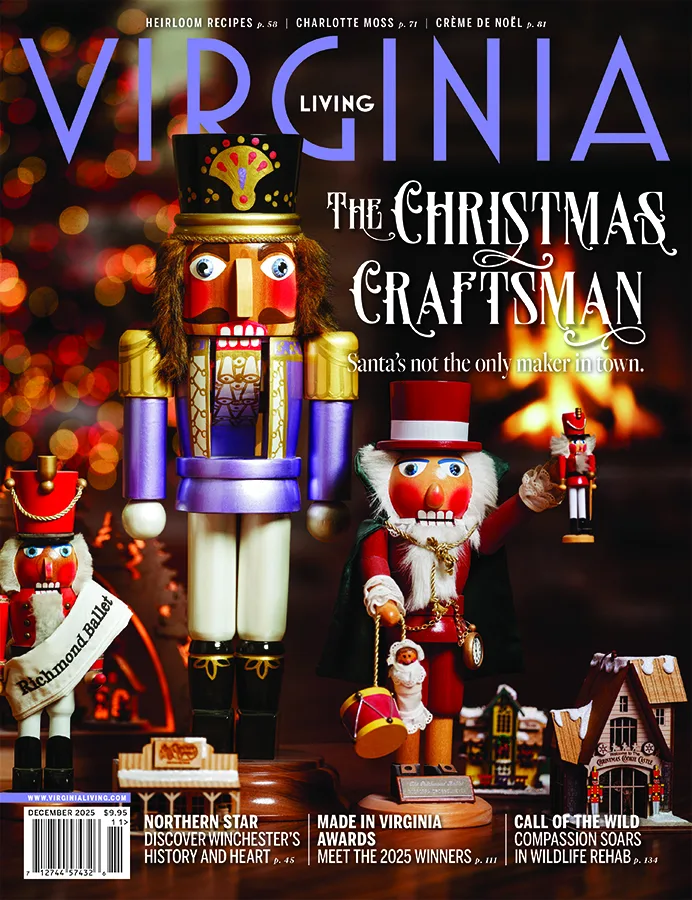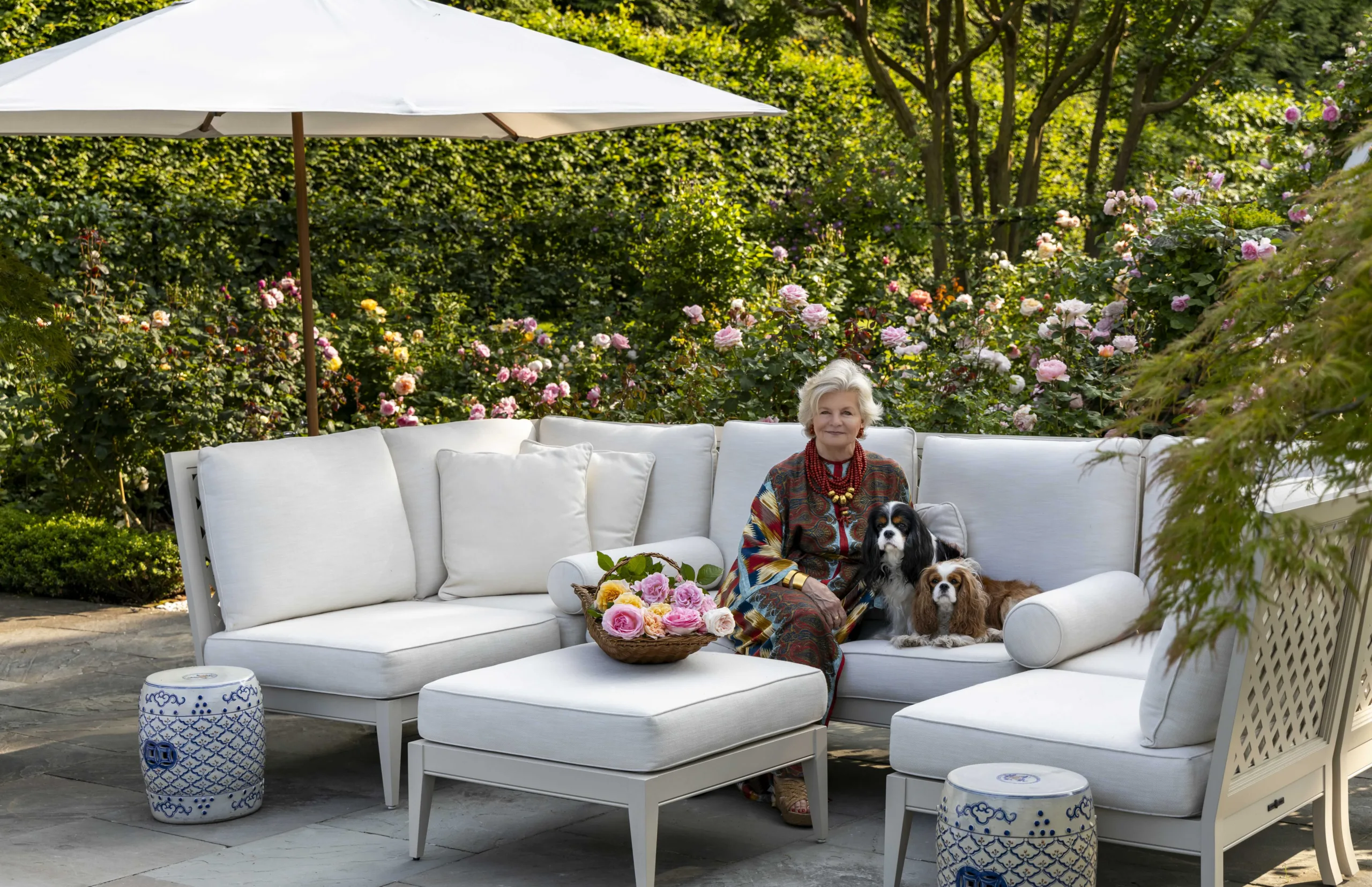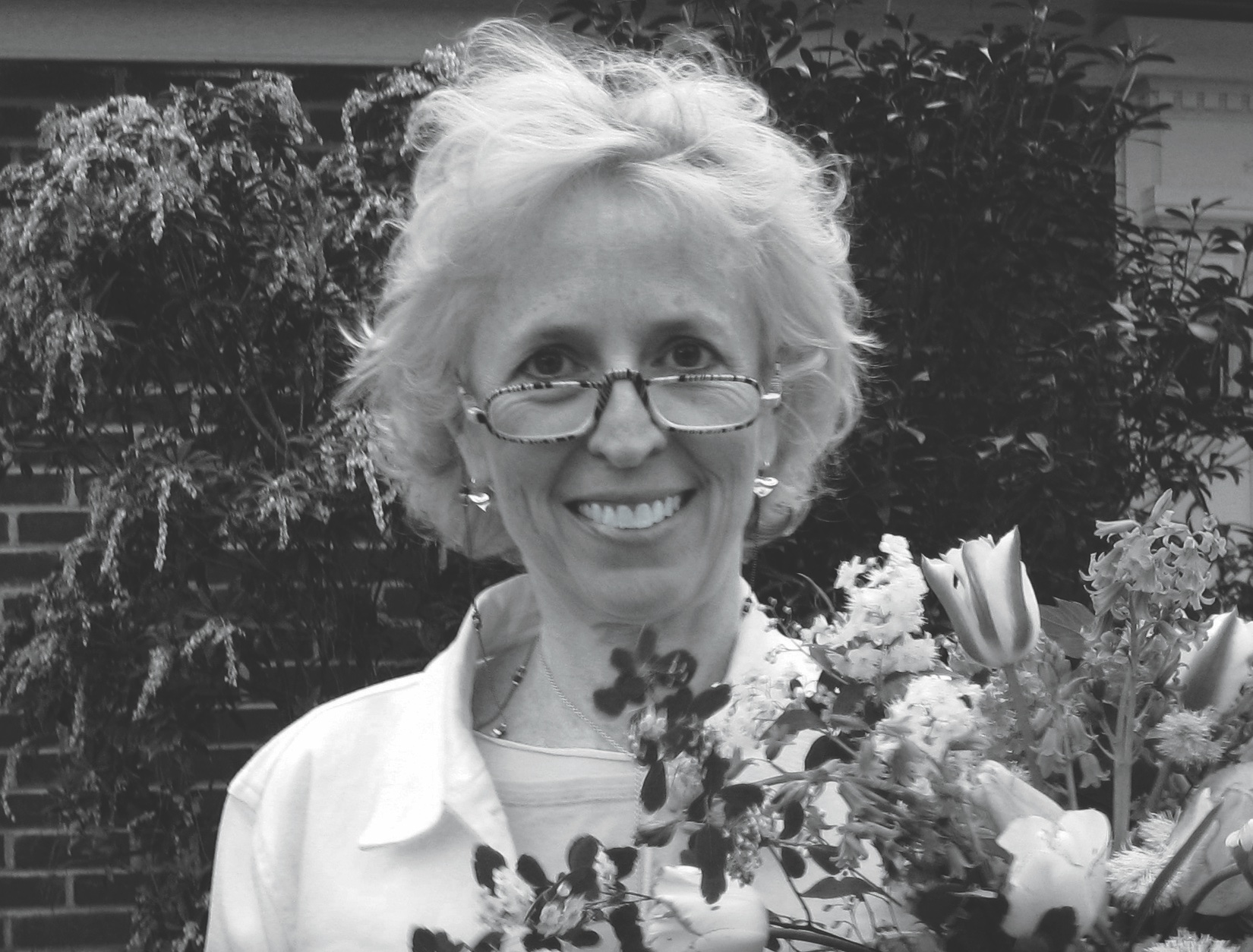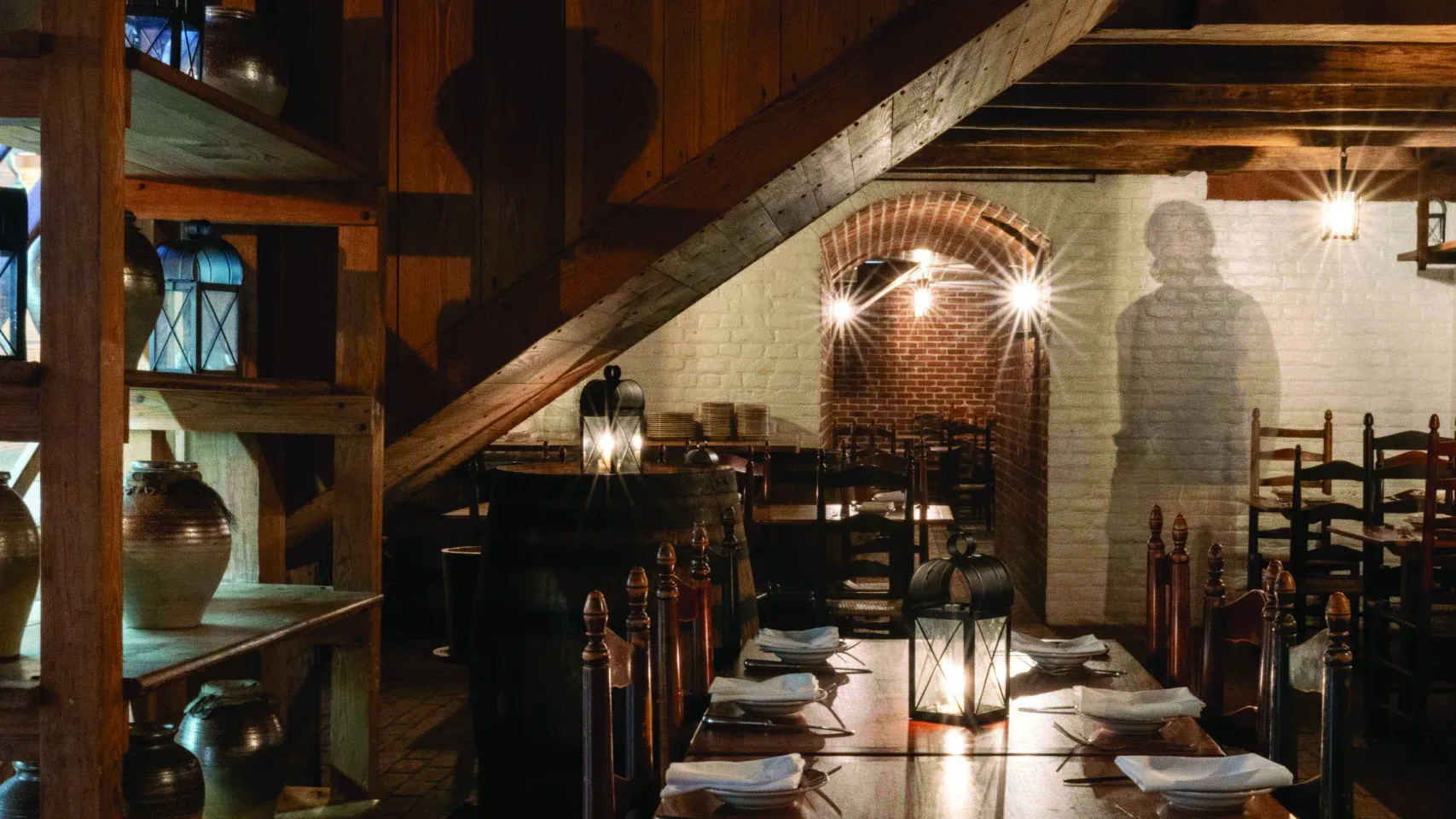In the world of interior design, few names command the respect and recognition of Charlotte Moss. Born and raised in Richmond, Moss grew up steeped in traditions that would later infuse her work with what has become known as “Southern warmth and hospitality.” Her childhood was filled with family gatherings at her grandmother’s house, where Sundays after church meant elaborate buffets with the whole family coming together—formative experiences that shaped her understanding of gracious living and the power of beautiful spaces to bring people together.
As the eldest of five children, Moss was naturally drawn to standing out, participating in high school activities, including cheerleading. She fondly recalls the experience as her chance to scream where “everybody was going to hear you.” This early confidence and desire to make her voice heard would prove prophetic.
After graduating from Virginia Commonwealth University with an English degree, she made the bold leap to New York City in 1978, initially working on Wall Street before discovering her true calling: interior design.
Since launching Charlotte Moss & Co. in 1985, Moss has built an empire that spans interior design, retail, publishing, and philanthropy. She is an Emerita Trustee of the Thomas Jefferson Foundation and sits on the boards of The Bone Marrow Foundation, The Madoo Conservancy, The Garden Conservancy, and the International Council of Hillwood Estate, Museum and Gardens.
Named a Grand Master by Elle Décor, she is the recipient of numerous honors, including the New York School of Interior Design’s Centennial Medal and the Royal Oak Foundation’s Timeless Design award, Moss has authored 11 books, most recently published by Rizzoli, and created licensed collections with prestigious brands like Brunschwig & Fils, Century Furniture, and Stark Carpet. Yet despite her global success, she has never forgotten her Virginia roots, maintaining deep ties to her home state and recently designing the 2025 Southern Living Idea House in Keswick.
I had the incredible opportunity to sit down with this dynamic doyenne of design and chat about what we both love: gracious living.
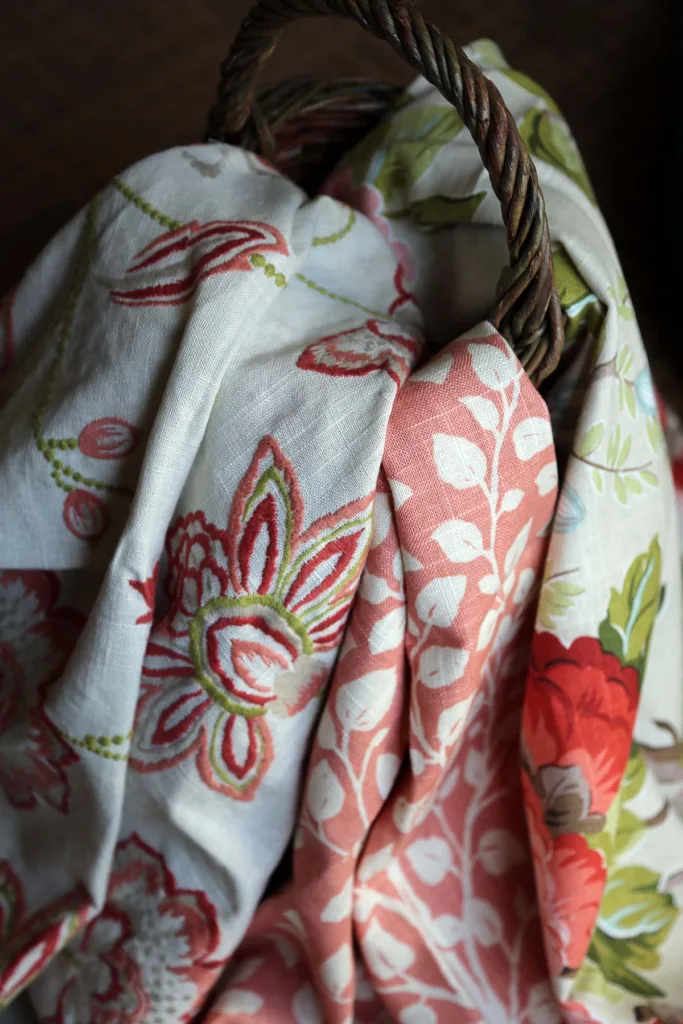
Charlotte Moss’ collaboration with Fabricut netted more than 100 items—from prints to wovens to trimmings. Photos courtesy of Charlotte Moss

The South Hampton, from Moss’ First Collection, is one of the many patterns she created for Pickard China.
Madeline Mayhood: You grew up in Richmond’s West End and went to Douglas Freeman, then VCU. How did you end up on Wall Street and then in design?
Charlotte Moss: I got married right out of college, got divorced after five years, and then decided to move to New York. I went to work for a Wall Street firm. I did it to make a living and learn something that I thought would benefit me later in life—understanding finance. But I was always going to auction houses, going to lectures, doing all those things. I didn’t know at the time, but I was plotting an escape from Wall Street.
MM: What prompted that escape?
CM: My firm went through a merger, and that was a perfect time for me—after about seven years—to say “next chapter.” I took my bonus, went to England, bought a container of antiques, and hung out a shingle. That was it.
MM: You started in a townhouse on West 10th Street in New York’s Greenwich Village, then moved uptown. What did you learn?
CM: Within six months I said, “Gotta go where the customers are,” and that was the Upper East Side. Never make your customers work. They were all coming from uptown, so you don’t make them travel—you go to them. We opened on 70th Street, then expanded to Lexington Avenue, and after 10 years, I closed the store.
MM: What has been your most rewarding experience professionally?
CM: Definitely my work with clients and developing relationships with people that exist to this day. We all have people we’ve worked for where you just couldn’t wait to get them in their house and move on. But then you have clients who are joyous, happy people who know why they’ve hired you. When you install, it’s like postpartum depression—that part of your life ends, but the relationship continues. It’s relationships built on trust and understanding. They know what they don’t know, and I help them fill in the gaps.
MM: For the Southern Living Idea House, you created a fictional family to center the design—a married couple and their daughter and son. Tell me more.
CM:If you’re going to decorate a whole house, you can’t do it like a decorator showhouse and have it just about furniture. It has to have a narrative, it has to have a story, and you have to make up that client and figure out how you’re going to please your imaginary client just the way you do with your decorating clients.
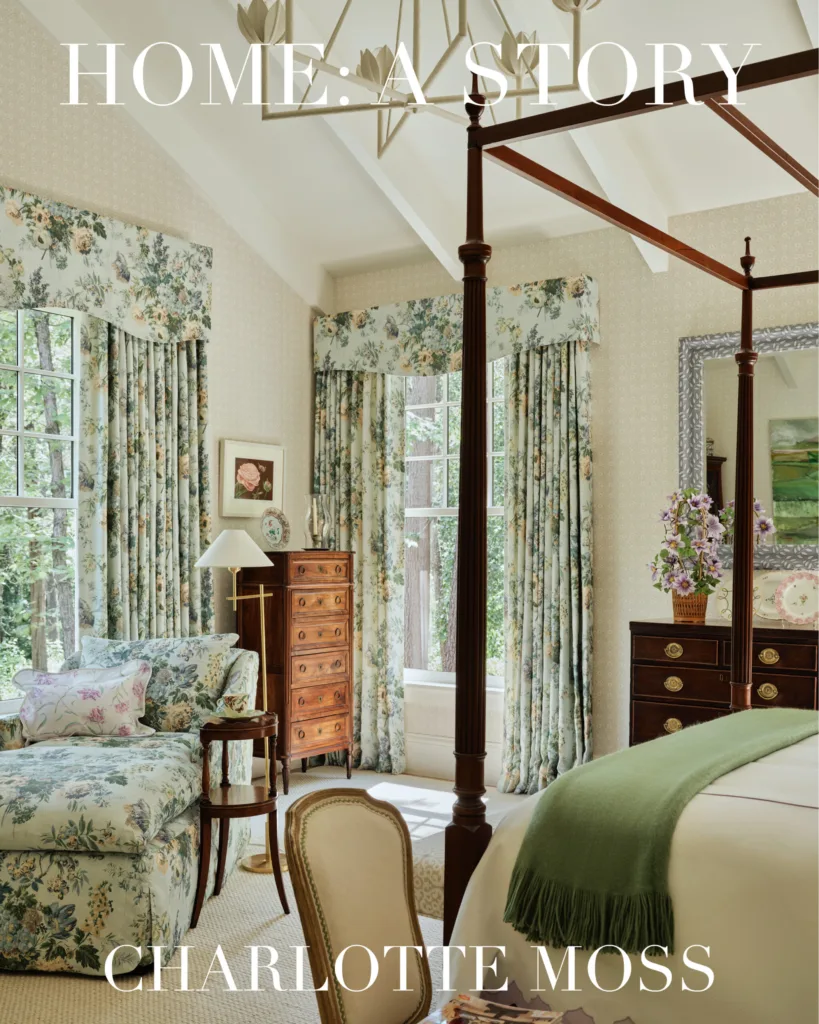
Charlotte Moss’ latest book Home: A Story invites readers inside the 2025 Southern Living Idea House—a home for a fictional family, brought to life through real design, rich detail, and timeless Southern style.
MM: What are your thoughts on trends, which I’m relieved you don’t follow. It speaks to your timeless sense of design.
CM: This is an expensive business where you’re spending other people’s money, and there’s a commitment on a decorator’s part to be mindful of value. A home is probably one of your single biggest investments in life, so I take it seriously. I’ve never followed trends. If I see something and somebody says, “That’s trending,” I go, “Great.” But in the end, I’m working for the client, not for the marketplace or a journalist who’s written an article about the color of the year.
MM: You share my love of antiques. How do you utilize them in your designs in an age when so many now are dismissing them?
CM: You can buy an antique with great patina and a story that costs less than a new piece. I’m not bashing new furniture, I’m just saying don’t dismiss antiques. The word just makes some people go “that’s granny,” but if you’re willing to do your homework, you can really create something beautiful.
MM:What are you reading currently?
CM: I’m reading this book about Condé Nast called Empire of the Elite. I’ve also been reading books about hospitality—I just finished Four Seasons by Issy Sharp; Graydon Carter’s memoir, When the Going Was Good; and Keith McNally’s book, I Regret Almost Everything. It’s been a great summer of memoirs. I listen to a lot of books because I can be in the garden, arranging flowers, washing my dog, doing anything
and listening.
MM: If you could be anywhere in the world right now, where would it be?
CM: In a good library with a bottle of wine and my dogs. I always say that when somebody asks me what my fantasy is—to be locked in my library where somebody knocks on the door, hands me my meal and a bottle of wine, and my dogs are with me. And then I can read and read and visit all those great books I’ve collected.
Budget-friendly design tips from Charlotte Moss
Charlotte Moss proves that creating beautiful interiors doesn’t have to require deep pockets or designer price tags. The renowned decorator shares her savvy strategies for transforming spaces without draining your bank account.
1. Transform with Paint: Moss’s go-to budget hack? A can of paint and a few brushes. It doesn’t require a huge time commitment, and it’s a minimal investment that delivers maximum impact—proof that a little color can revolutionize any room.
2. Hunt for Hardware Store Treasures: No need to get depressed in fancy boutiques if you don’t have the budget to match. Moss regularly prowls the aisles of Home Depot and Lowe’s for inspiration. Her secret? Finding basic pieces, imagining their potential, and elevating them. For the Southern Living Idea House, she snagged a plain mirror under $50, then wrapped the frame in leftover fabric. The result? An eye-catching showpiece that looks far more than its actual cost.
3. Reimagine and Repurpose: Think beyond an item’s intended use. Moss transformed an Italian linen tablecloth into charming café curtains for the kitchen in the Idea House—no lining, no fuss. She emphasizes that not every project needs elaborate construction or excessive planning. Sometimes an easy, relaxed approach delivers the best results.
4. Go Big with Budget Materials: When working with inexpensive fabrics, Moss recommends abundance. Her approach is simple: take ordinary materials and use them generously to create an extraordinary effect. Even basic muslin gathered on rods throughout a space can look stunning. The secret lies in being lavish with affordable textiles—quantity transforms humble materials into something that appears luxurious.
6. Embrace Vintage Finds: Don’t dismiss antique wood furniture as passé. Moss is a firm believer in antiques and says they offer exceptional value that many overlook. Pieces like vintage secretaries often cost less than new furniture while adding character, contrast, and compelling stories to modern spaces. To her, writing off these treasures without considering their potential is a real missed opportunity.
7. Layer What You Have: Moss excels at layering patterns, textures, and heirlooms. That vintage throw from your grandmother? Don’t bury it in a guest room drawer—drape it over an ottoman and let it shine. Mix fabric and color—toiles, damasks, florals, geometrics. Add a fresh posy on an end table for a pop of color. No need to relegate books to just shelves: stack them here and there. Showcase framed photos. Curate your space to be uniquely you.
This article originally appeared in the December 2025 issue.
